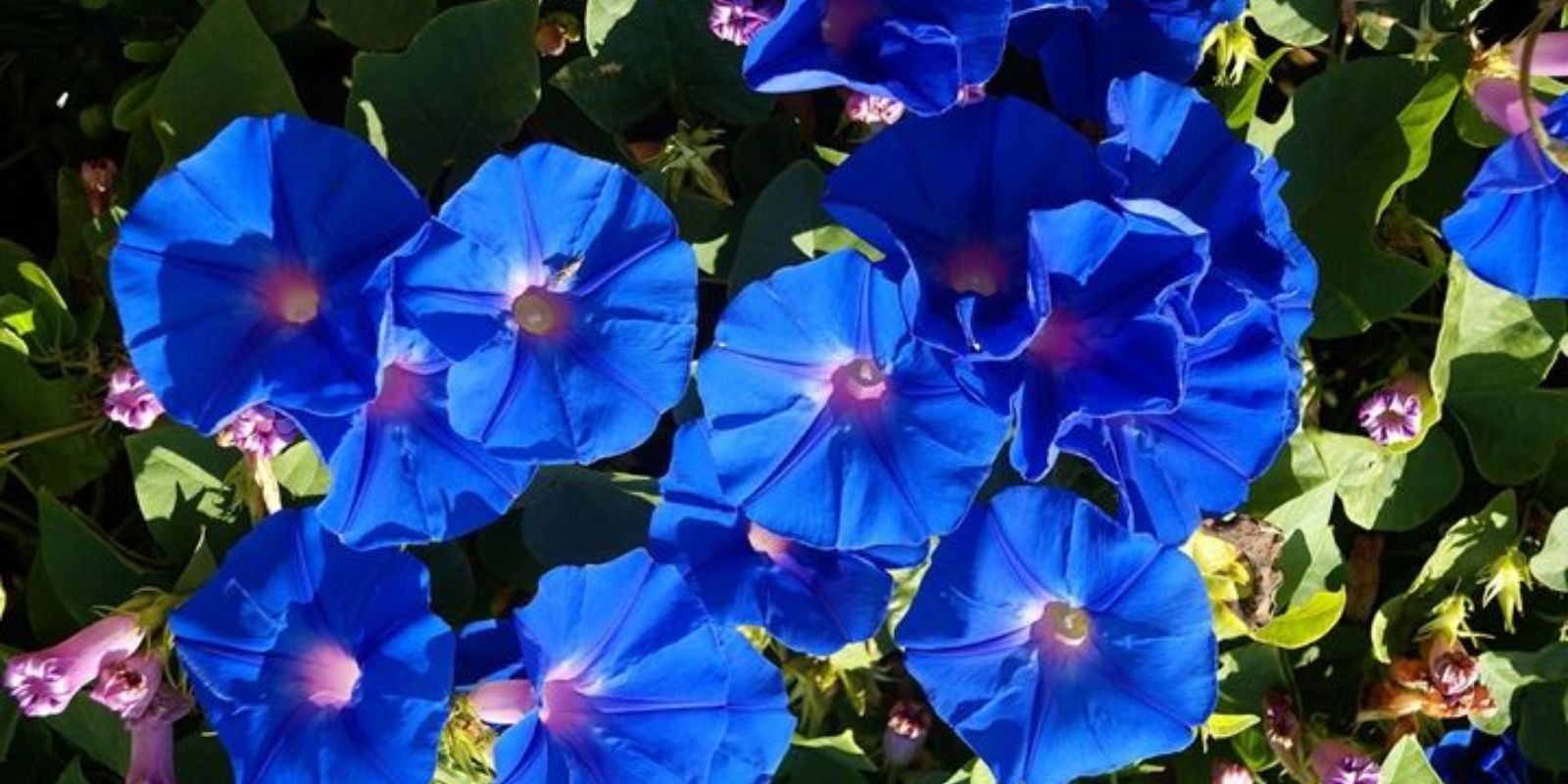The Blue Morning Glory (Ipomoea tricolor) is a remarkable plant known for its spectacular azure-blue flowers that bloom in the morning and close by the afternoon. This climbing vine is a favorite among gardeners for its rapid growth, vibrant colors, and ability to cover unsightly structures or create a lush, green screen. If you’re looking to add a touch of brilliance to your garden, this guide will walk you through the process of growing and caring for this beautiful plant.
Introduction to Blue Morning Glory
Ipomoea tricolor, commonly known as Blue Morning Glory, is a perennial vine in the Convolvulaceae family. It is native to tropical and subtropical regions of the Americas. The plant is celebrated for its large, trumpet-shaped flowers that come in shades of blue, sometimes with a white or pink throat. Blue Morning Glory is also admired for its heart-shaped leaves and vigorous growth, making it an excellent choice for gardeners looking to add vertical interest and a splash of color to their outdoor spaces.
Choosing the Right Location
1. Sunlight Requirements
The Blue Morning Glory thrives in full sunlight, so select a planting location that receives at least 6-8 hours of direct sunlight each day. This exposure ensures that the plant will produce its vibrant blooms and maintain healthy growth. In regions with very hot climates, some afternoon shade can be beneficial to prevent the plant from scorching.
2. Soil Preparation
Prepare the soil by selecting a well-draining, fertile soil type. Blue Morning Glory prefers slightly acidic to neutral pH levels, ranging from 6.0 to 7.0. Enrich the soil with compost or well-rotted manure to improve fertility and drainage. Heavy clay soils should be amended with organic matter to ensure good drainage and aeration.
Planting Blue Morning Glory
1. Seed Sowing
You can start Blue Morning Glory from seeds either directly in the garden or indoors. If starting seeds indoors, sow them 6-8 weeks before the last expected frost date. Soak seeds in water for 24 hours before planting to enhance germination. Plant seeds about 1 inch deep in seed-starting trays or pots filled with a seed-starting mix. Keep the soil consistently moist and maintain a warm temperature between 70-80°F (21-27°C) until germination, which typically occurs within 7-14 days.
2. Transplanting
Once seedlings have developed a couple of sets of true leaves and the risk of frost has passed, they can be transplanted outdoors. Space plants about 12-18 inches apart to allow room for their vigorous growth. If sowing seeds directly into the garden, wait until after the last frost date and plant them 1 inch deep.
3. Supporting Structures
Blue Morning Glory is a climbing vine and requires support to grow properly. Provide a trellis, arbor, or fence for the plant to climb. Ensure the support structure is sturdy and tall enough to accommodate the plant’s potential height of up to 10 feet.
Care and Maintenance
1. Watering
Water the Blue Morning Glory regularly to keep the soil consistently moist but not waterlogged. Water deeply during dry spells, especially during the hot summer months. Ensure proper drainage to prevent root rot. Mulching around the base of the plant can help retain moisture and regulate soil temperature.
2. Fertilization
Feed Blue Morning Glory with a balanced, all-purpose fertilizer every 4-6 weeks during the growing season (spring and summer). A 10-10-10 or similar balanced formula will provide essential nutrients for vigorous growth and abundant flowering. Avoid over-fertilizing, as excessive nutrients can lead to lush foliage but fewer blooms.
3. Pruning
Pruning Blue Morning Glory helps maintain its shape, encourages bushier growth, and removes dead or damaged stems. Regularly trim back the plant to promote healthy branching and prevent it from becoming overly leggy. Deadheading spent blooms can also encourage more flowers.
4. Pest and Disease Management
Monitor the plant for common pests such as aphids, spider mites, and whiteflies. Treat infestations with insecticidal soap or neem oil. Blue Morning Glory is generally resistant to major diseases but can occasionally suffer from fungal issues, especially if grown in overly wet conditions. Ensure good air circulation around the plant to reduce the risk of fungal infections.
Harvesting and Enjoying the Blooms
Blue Morning Glory flowers typically bloom in the morning and fade by afternoon. The plant can produce an abundant display of flowers throughout the growing season, adding vibrant color to your garden. Enjoy the beauty of these blooms and use them to create stunning floral arrangements if desired.
Conclusion
The Blue Morning Glory (Ipomoea tricolor) is an exceptional addition to any garden, offering rapid growth, beautiful blue blooms, and a touch of elegance. By providing the right conditions—ample sunlight, well-draining soil, regular watering, and proper support—you can cultivate a thriving vine that transforms your garden into a vibrant, colorful oasis.
Are you ready to transform your garden with the stunning Blue Morning Glory? Start planting today and watch your outdoor space burst into brilliant hues of blue!

